Women's Health
Mission Statement | Background | Contemporary Issues | Cultural Sensitivities | Bibliography | About Us
Home > Contemporary Issues > Women's Health
Women's Health
Breastfeeding Practices Among Ojibwe Women
The preventative health and infant-mother bonding benefits of breastfeeding are widely recognized. Properties of breastmilk significantly reduce the frequency of disease in infants, particularly infant diseases that occur at higher rates in Native American populations than in the general population (e.g., Sudden Infant Death Syndrome, respiratory and gastrointestinal infections, influenza, and the common cold). However, many women in this at-risk population choose to wean their babies in their early postpartum months, or choose to not breastfeed at all. Breastfeeding rates in Minnesota are considerably higher than national averages, however, weaning in the first two months postpartum occur in both urban and rural Native American populations. There are many factors that can contribute to a woman’s choice to wean early or to never breastfeed. Some of these include: non-positive perceptions about breastfeeding, returning to work environments that don’t allow for breastfeeding or breast-pumping, influence from and lack of support of family members, lack of knowledge about how to manage lactation problems, and loss of family-directed breastfeeding tradition. culturally competent breastfeeding promotion and education are essential to draw on the power of the community (Dodgson).
Birth Practices among Ojibwe Women
“Increasingly, people enter the world in a hospital. Birth is an emotional and generally painful occasion imbued with cultural ritual and thus, once again, we find the potential for misunderstanding and conflict, as well as opportunities for cultural sensitivity” (Galanti, 148).
By asking patients if there are customs they want to practice during labor is a good way to open up the conversation and make her feel comfortable expressing her needs and preferences. By having these conversations prior to the birth, even starting at the first prenatal appointment, you, her medical care provider are setting up a dynamic that puts the patient in a position of power, giving her control and autonomy over an important and often emotional event in her life. The sense of self-determination this kind of conversation fosters can lead to stronger doctor/nurse-patient relations, and can drastically improve health outcomes for both mother and baby. It’s important to remember some of the ways nurses and doctors can provides those additional times and spaces to expectant mothers in order to incorporate their cultural practices into their birth experience.
References
Dodgson, J. E. (1999). Breastfeeding and weaning practices of urban ojibwe women (Order No. 9944355). Available from ProQuest Dissertations & Theses Full Text: The Humanities and Social Sciences Collection; ProQuest Dissertations & Theses Global. (304524362). Retrieved from http://search.proquest.com/docview/304524362?accountid=9772
Alvord, Lori Arviso., and Elizabeth Cohen. The Scalpel and the Silver Bear. New York: Bantam Books, 1999.


